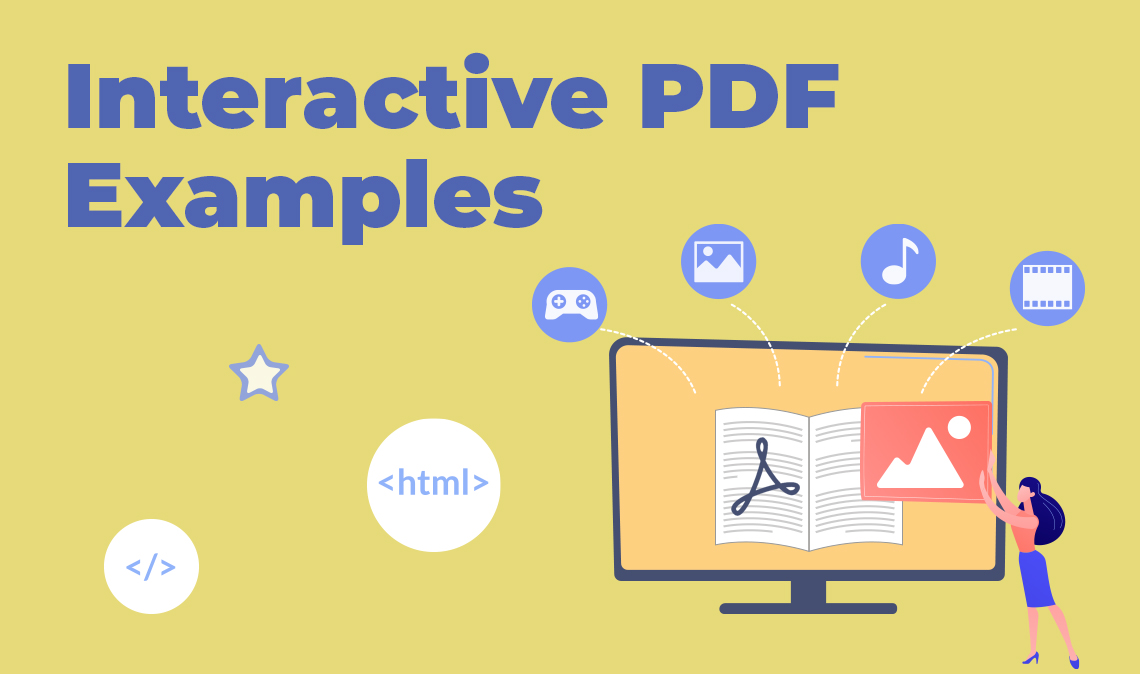PDF (Portable Document Format) files are known for their ability to preserve document integrity and maintain a consistent appearance across different devices and platforms. In addition to these features, PDFs can also incorporate interactivity, making them more engaging and dynamic. Interactive PDFs allow users to navigate, interact, and engage with the content in various ways. In this article, we will explore some examples of interactive PDFs and how they can enhance the user experience.
Fillable Forms
- One of the most common examples of interactive PDFs is fillable forms. Instead of printing a form and manually filling it out, interactive PDF forms allow users to input information directly into the form fields. These fields can include text boxes, checkboxes, radio buttons, dropdown menus, and more. Once the form is filled out, users can save, print, or submit the form electronically. Fillable forms are widely used for applications, registrations, surveys, feedback forms, and other data collection purposes.
Navigation and Table of Contents
- Interactive PDFs can include navigation elements that enhance the user’s ability to navigate through the document. For example, a table of contents can be created with clickable links that take users directly to specific sections of the document. This allows for quick and convenient access to specific content within the PDF, improving the overall user experience.
Hyperlinks and URLs
- Hyperlinks and URLs can be embedded within PDFs, allowing users to click on them and be directed to external websites, additional resources, or related content. This interactive feature is particularly useful when creating documents that reference online sources, websites, or multimedia content. Users can simply click on the link within the PDF and be taken directly to the relevant webpage.
Multimedia Integration
- Interactive PDFs can incorporate multimedia elements such as videos, audio files, and images. Videos can be embedded within the PDF, allowing users to play and watch them directly from the document. Similarly, audio files can be included, enabling users to listen to recorded content or audio descriptions. Images can be displayed in high resolution, with the ability to zoom in and out for a closer look. The integration of multimedia elements adds a dynamic and immersive aspect to the PDFs, making them more engaging and impactful.
Interactive Presentations and Slideshows
- Interactive PDFs can be designed as presentations or slideshows, allowing users to navigate through content in a slide-by-slide manner. Users can click on navigation buttons or use keyboard shortcuts to move forward or backward through the presentation. Slides can include animations, transitions, and interactive elements such as clickable buttons or tooltips, providing an interactive and engaging presentation experience.
Digital Magazines and Catalogs
- Interactive PDFs are commonly used for creating digital magazines, catalogs, and brochures. These PDFs can incorporate features like page-flipping animations, clickable hotspots, embedded videos, and interactive product galleries. Users can navigate through the pages, zoom in on product images, click on items of interest for more information, and even make purchases directly from the PDF.
In conclusion, interactive PDFs offer a wide range of possibilities for enhancing the user experience and engagement. From fillable forms and navigation elements to hyperlinks, multimedia integration, and interactive presentations, interactive PDFs allow for a more dynamic and immersive interaction with the content. These examples demonstrate the versatility of interactive PDFs across various industries and purposes, enabling a richer and more interactive experience for users interacting with digital documents.

